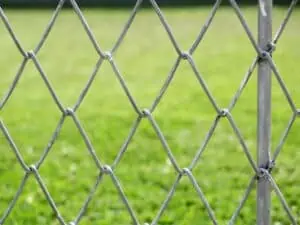How to Connect Field Fencing to Metal Posts?
If you’re thinking about keeping livestock, predators, or garden pests out of your property or area, a field fence is an affordable and effective way to go. It can also help protect animals from injury, as it provides a safe place for them to hide out from the weather or other hazards. Whether you’re a professional or an amateur, you can install your own field fencing using a few simple tools.
(Searching in Google “invisible fence removal cost“? Contact us today!)

First, identify the area where you want to construct your fence. This requires knowing the precise boundaries of your property, any buried power lines, water or gas pipes, and any natural features like trees. If possible, sketch a map of the area to help with your layout.
Next, mark each post with a stake so you can know where it goes. Stakes help you keep your posts straight and level, a critical step to ensure a strong fence. You can also use stakes to measure from one corner of the fence line to the other to make sure your corners are square and that you’re not off by too much.
Once you’ve marked your fence lines, dig holes in the ground in the same dimensions for all of the corner and end posts. This is to form a right angle and ensure your fence is stable, advises the University of Missouri Extension.
Attach the fence wire to the T-posts using wire clips, which come with most fence posts. These clips are designed to secure the fence wire to a T-post with ease and sturdiness and are available in various shapes, styles, and sizes. They can be secured by using a drill chuck or a tie wrench and are recommended for securing the fence wire to the T-posts without bending or breaking the wire.
Stretch the fence wire along a post, leaving 18 to 24 inches of extra wire on each end of the mesh. Pull it tight and secure the fence mesh to the post with a few staples. Repeat with the other corner, securing the wire with a few more staples. You can also purchase a “come-along” to pull the fence mesh tight and wrap it around the main line.
To prevent the fencing from shifting vertically, a brace is recommended at each end of each fence line. These braces are attached to the post with a wire clip that is pushed into the post’s back, and they hold the wire securely in place on the post. These wire clips are available in many sizes and shapes to accommodate most T-bar and U-bar posts.
After the fence is installed and all the posts are set, if you live in an area that gets rained often, add some concrete to the bottom of the holes to divert excess water and protect the fence from rotting at the ground level. Mix some extra Quikrete Fast-Setting Concrete Mix into a bucket or wheelbarrow, following the mix-to-water ratio on the bag.
To connect the fence to the underlying ground, you’ll need some ground rods. These rods are long, 6-8 foot pieces of galvanized wire that extend from the ground to the energizer. You’ll need a minimum of three to six rods and a grounding system for each pole. The grounding system should be connected to the energizer with a ground wire, and the rods should be placed about 3 meters apart.

